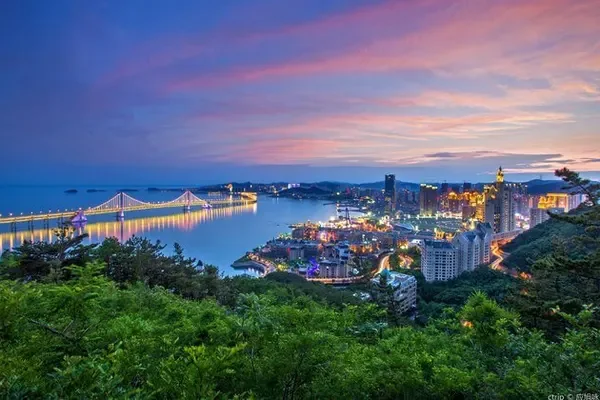Known as the roof of the world, the Qinghai-Tibet Plateau is mysterious and beautiful. In addition to magnificent mountains and rivers, it also has unique cultural customs and colorful ethnic cultures. Qinghai is an important part of the Qinghai-Tibet Plateau. Its altitude is slightly lower than that of Tibet. It not only has beautiful scenery not inferior to Tibet, but also has a more suitable environment for human life. Therefore, it has become a tourist attraction in the minds of many people in recent years. As a travel self-media, Yufan visited Qinghai three times in 2018, each time with different feelings and gains.
In November, we came to the Regong area of Huangnanzhou in the southeast of Qinghai Province. This is the birthplace of "Regong Art" and the only national historical and cultural city in Qinghai. There are countless Buddhist painters who are engaged in "Tibetan painting art", and there are "Regong Art" that is full of mysterious thangka, pile embroidery and sculpture, and it is therefore known as the "Hometown of Tibetan Painting" in China.
In the Regong area, there are many famous Tibetan temples, among which Longwu Temple, Wutunshang Temple, Wutunxia Temple, Guorima Temple, etc. are the most famous. In the limited time, we visited the Longwu Temple respectively. Wu Temple and Wutunxia Temple are two most popular temples. In Wutunxia Temple, we were fortunate enough to walk into the temple and learn more about the life of the lamas in the temple.
Wutunxia Temple is located 7 kilometers north of Longwu Town, Tongren County, Huangnan Tibetan Autonomous Prefecture, Qinghai Province. There are many monks here. It has a history of more than 600 years. There are a large number of exquisite "Tibetan painting art" works in the temple. It is known as one of the birthplaces of "Regong Art" because of its cultural relics and artistic value.
Through the introduction of the youngest son of Douga, a master of Chinese arts and crafts (Gazang Nima, a provincial master of arts and crafts in Qinghai), we met his cousin, Dawa Naori, a famous local painting monk, in Wutunxia Temple. He was born in Xiazhuang, Wutun, Tongren County, Qinghai Province in 1981. His legal name is Jiumei Teyu. According to his own introduction, he began to learn from Xia Wucairang, a well-known local thangka painter, at the age of nine. Master Luosang Jiancuo and studied Gelugpa classics under the famous Khenpo Tenbe Jiancan.
According to his Tangdi Ga Zang Nima, Dawa Naori had extraordinary artistic talent since he was a child. When he was young, he studied under Dou Ga (his uncle, Ga Zang Nima's father), learned Thangka painting, and at the same time learned the art of sculpture from the statue master Injega. So far, Dawa Naori has more than 20 years of experience in Thangka painting and Buddha statue sculpture.
Although he is young, Dawa Naori's Thangka painting and Buddha statue sculpture skills have long been famous overseas. He has been invited to paint Tangka temples in Beijing Baita Temple, Gansu Labrang Monastery, Shanxi Wutai Mountain, Sichuan and Shaanxi. Card murals, shaping Buddha statues. Its painting style is exquisite, with smooth and exquisite lines; the Buddha statues are solemn, solemn and vivid. Many of his thangka works are collected by lay people and art lovers at home and abroad.
Not only that, his personal works have been exhibited and won awards in relevant national expositions many times, such as the 2008 Qinghai International Thangka Cultural Heritage Expo, the 2009 Beijing International Cultural and Creative Industry Expo and the 2010 Shanghai World Expo. At the same time, Dawa Naori was invited and specially hired as the chief painter of Qinghai Hope Cultural Exchange Center in 2009.
As the inheritor of Chinese Tibetan traditional Thangka culture and art, Dawa Naori attaches great importance to and emphasizes the tradition of master-student inheritance of Thangka painting, a special art form. Teaching Thangka painting methods and techniques in a traditional way, he has cultivated more than ten new generation successors of Thangka painting, five of whom have reached the level of painters. He has made his own contribution to saving and continuing the art of traditional Chinese painting of Buddha statues, so that this national intangible cultural heritage can continue to spread.
When we met him, he was creating clay sculptures. In his words, clay sculptures of Buddha statues have extremely high requirements for artists. They must have blood painting, calligraphy, bricklaying, brickwork, woodworking, and even painting, carving...etc. This kind of skill, from an apprentice to a seasoned clay sculptor, needs at least ten years of honing to become a master.
The work of clay sculpture of Buddha statues is very boring, but it is also sacred. Over the past few decades, he has molded hundreds of clay sculptures from his hands, each of which requires a very complicated process. Only the cracking of these Buddha statues can It has to be processed many times until it does not crack. His creation room is very simple and does not use modern digital equipment. From design to production, he relies entirely on his own experience and feeling. Almost every statue is unique.
Dawa Naori is nearly forty years old, and he has become a monk in Wutunxia Temple for more than 20 years. Many monks who have become monks at the same time as him have returned to the vulgar, but he has no plan to return to the vulgar. He said that he will spend his whole life inheriting And inheriting Thangka art and clay sculpture craft, he said that every time he draws Thangka or makes clay sculpture, it is a dialogue with Buddha and an exchange with art. Thanks to his efforts, he is now a well-known master of arts and crafts in Huang Nanzhou, and also a newcomer to Regong art.

